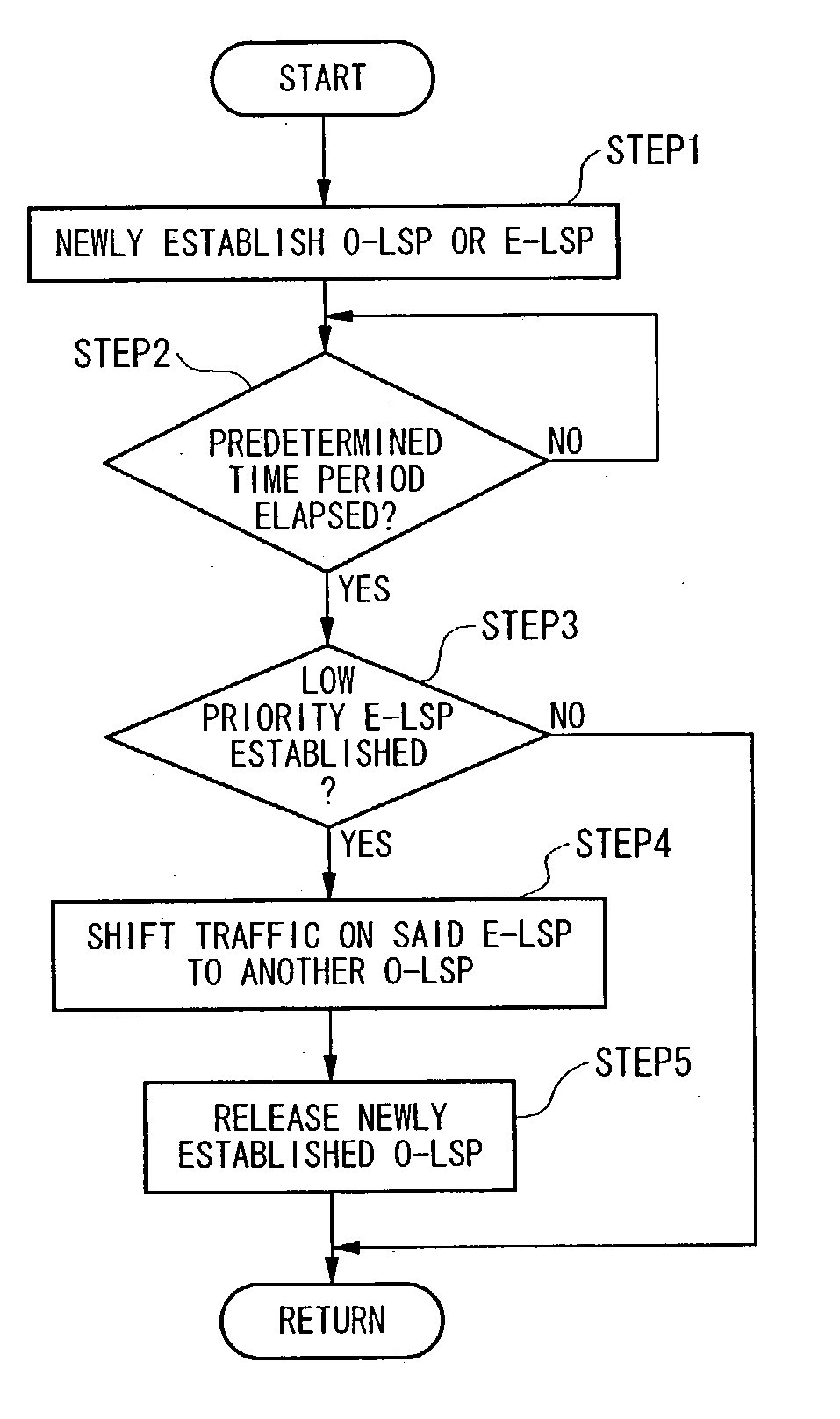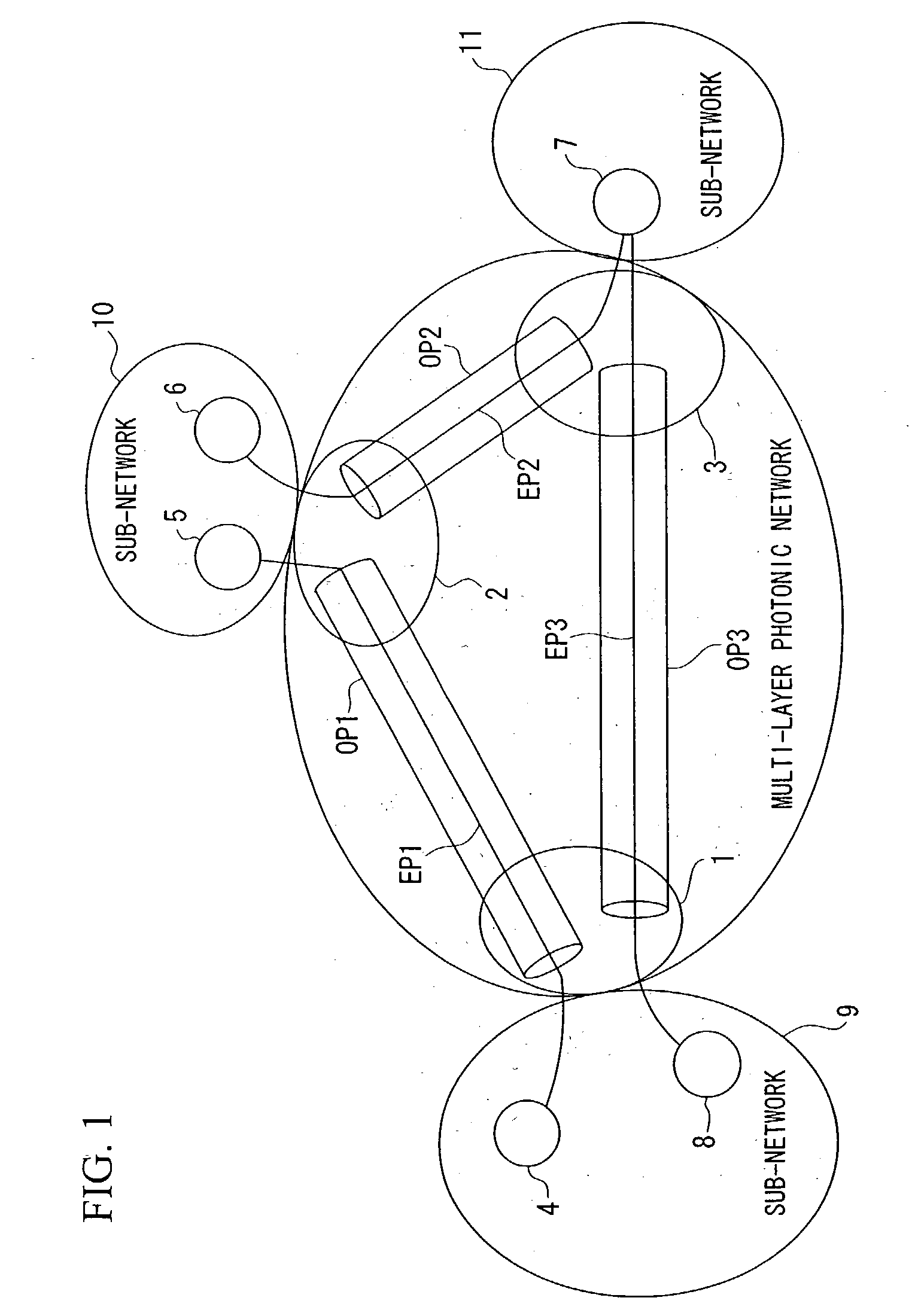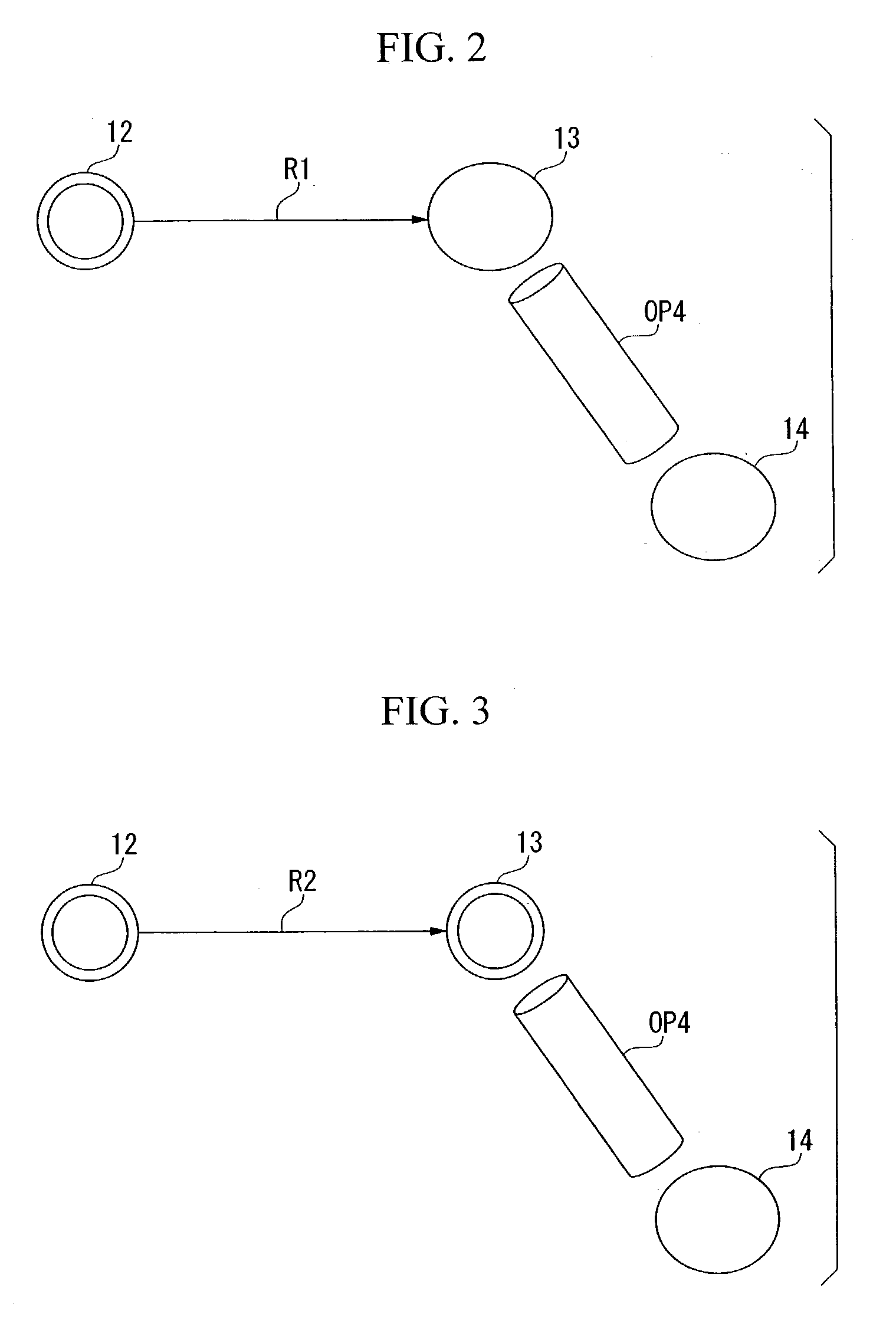Node used in photonic network, and photonic network
a photonic network and node technology, applied in the field of photonic networks, can solve the problems of not being able to freely vary the optical path, not being able to make the best possible use of o-lsp resources, and not being able to freely modify the o-lsps according to the needs of the user,
- Summary
- Abstract
- Description
- Claims
- Application Information
AI Technical Summary
Problems solved by technology
Method used
Image
Examples
Embodiment Construction
]
[0350] The overall operation using the nodes 1A through 3A and the border routers 4A through 7A which were explained with reference to the sixth through the twelfth preferred embodiments of the present invention will now be explained. If, now, the traffic upon the electrical path EP2 increases, so that it has become impossible for the communication capacity of the optical path OP1 to deal with the increased traffic, then the node 1A newly establishes the optical path OP3, establishes the electrical path EP3 which uses the optical path OP3, and shifts the increased traffic to the electrical path EP3. However, the node 1A and the node 3A do not advertise the establishment information for the optical path OP3 and the electrical path EP3 to the other nodes, since, if the increased traffic is temporary, the optical path OP3 and the electrical path EP3 may well be released immediately, and the traffic between the border router 6A and the border router 7A may well return to the original e...
PUM
 Login to View More
Login to View More Abstract
Description
Claims
Application Information
 Login to View More
Login to View More - R&D
- Intellectual Property
- Life Sciences
- Materials
- Tech Scout
- Unparalleled Data Quality
- Higher Quality Content
- 60% Fewer Hallucinations
Browse by: Latest US Patents, China's latest patents, Technical Efficacy Thesaurus, Application Domain, Technology Topic, Popular Technical Reports.
© 2025 PatSnap. All rights reserved.Legal|Privacy policy|Modern Slavery Act Transparency Statement|Sitemap|About US| Contact US: help@patsnap.com



